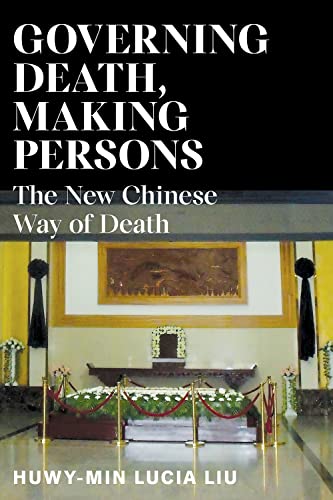In her new book, Governing Death, Making Persons: The New Chinese Way of Death (Cornell University Press, January 2023), Mason anthropology professor Huwy-min Lucia Liu writes about how economic reforms and changes in the management of death in China have affected the governance of persons.

What inspired you to write this book?
Before I started my fieldwork, I had assumed that I would be going to witness the rise of new death rituals. Ones that emphasized individuality. Almost paradoxically, I had also assumed that I would see the re-emergence of religious funerals. I had these assumptions because scholars studying the People’s Republic of China have long argued that introducing a market economy has brought about the rise of individuals and religious revival.
I was intrigued to explore the interplay between these two trends in terms of death rites. Whether the revival of religious funerals indicated a rise of individualism or, instead, of forms of community was an additional separate issue to look at. Of course, when I got there, I found things were very different from what my readings of other areas of social life had led me to assume.
Death in urban China had undergone drastic changes under the Chinese Communist Party since 1949 and then again since the beginning of the reform period in the 1980s. We know that the Chinese state nationalized funeral industries (along with all the other industries) and repressed traditional death rituals heavily in the post-1949 period before China adopted the market economy. Beyond this, however, scholars knew very little about death in urban China. Exploring the new Chinese way of death was a way for me to understand the intended and intended consequences of constructing citizenship and subjectivity in contemporary China.

Was there anything that surprised you in the research of this book?
Two things surprised me the most. First, most people living in Shanghai preferred to commemorate the dead with a particular style of funeral called “memorial meetings.” This ritual is a secular civil ritual that uniformly commemorated the dead as model socialist citizens. This finding was surprising because after the introduction of the market economy in the 1980s, the Chinese Communist Party actively discouraged people from performing this ritual. Part of the reason for this is that this ritual was popularized in Shanghai as a postmortem rehabilitation ritual during the Cultural Revolution. As such, publicly commemorating the dead as socialist citizens could be seen as pointing out the state’s mistakes.
What’s even more surprising was that the most common death ritual in Shanghai were “religious versions of this secular socialist civil funeral.” How could it be possible to have a ritual that both denies and recognizes spirits and the afterlife at the same time? In my book, I unpack these puzzles by explaining how ritualized acts created moments of reflexivity to question the taken-for-granted reality, how social conventional acts actually provide the possibility for pluralism, and how the pursuit of sincerity and authenticity diminish people’s capacity to live with difference.
What are you working on now?
I am working on two new projects. Both projects are about governing “nature,” its impact on people, and how such changes in governing nature can tell us something about constructing sovereignty and citizenship. The first project tackles how and why the Chinese government developed an “American national park system with Chinese characteristics.” Our University Libraries’ Fenwick Fellowship is currently supporting my work on parts of this project. The second project explores how Taiwan (Formosan) black bears were transformed from a not-so-well-known subject of conservation activism for biodiversity to a national totem representing Taiwan internally and externally.
